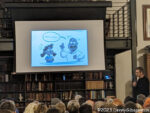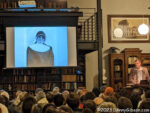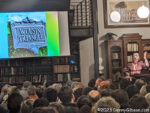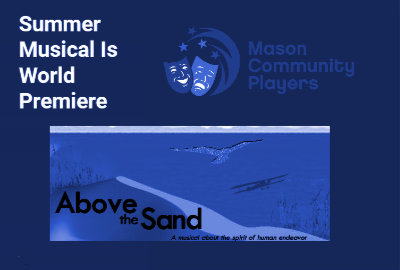 When I wrote about my first visit to the Loveland Stage Company, I spoke of the guilt I felt for taking so long to take in a play there. The same sort of guilt surrounds my first time attending a Mason Community Players production. MCP is celebrating its 50th anniversary this year which means it is six years older than LSC. I suppose I could feel extra guilty for ignoring the Mason group even longer than the Loveland group but, although I’ve lived near Mason, I have never actually lived in Mason so feeling equal levels of guilt regarding my being late to the party at both theaters seems more or less OK.
When I wrote about my first visit to the Loveland Stage Company, I spoke of the guilt I felt for taking so long to take in a play there. The same sort of guilt surrounds my first time attending a Mason Community Players production. MCP is celebrating its 50th anniversary this year which means it is six years older than LSC. I suppose I could feel extra guilty for ignoring the Mason group even longer than the Loveland group but, although I’ve lived near Mason, I have never actually lived in Mason so feeling equal levels of guilt regarding my being late to the party at both theaters seems more or less OK.
But I also feel another kind of guilt regarding this review. I have no special or early access to plays so my infrequent reviews of them are often near or even after the end of their run when few or no performances remain. I always feel a little guilty about that. That feeling increases when the production is one I want to recommend because it’s extra good or somehow unique. All that is true of Above the Sand meaning I really feel guilty about the timing of this review.
Producing any play is an accomplishment. There are certainly some particular challenges in doing it with amateurs and volunteers and doing a musical must add even more. Performers need to be able to sing and maybe dance a bit, and musicians are needed to accompany them. Community theater productions will never be a match for well-financed Broadway companies but their audiences don’t expect them to be. When a community theater company produces a successful Broadway musical it can benefit from having one or more professional productions as examples without getting dinged for not having Barbra Streisand or Gregory Hines in the cast. The production I attended Thursday night had all of the listed challenges without one of the aids. Amateurs and volunteers did indeed sing and dance accompanied by offstage volunteers playing instruments but they were not copying from anyone. This was the world premiere of Above the Sand so there was no previous production to provide an example. This gang didn’t need one.
The premiere run ended on Saturday. Not knowing how long online information will remain available, I’ve taken the liberty of copying this short description from the Mason Players’ website:
Above the Sand is written and composed by MCP member Tom Davis. It tells of the challenges and triumphs of Wilbur and Orville Wright as they bring the power of flight to the world. The story takes the audience on a journey from a bicycle shop in Dayton, Ohio to Kitty Hawk, North Carolina, Washington, D.C., and Paris, France. Above the Sand is a piece of local history that has affected life around the world. It shines a light on the struggles of those who dream an idea into reality, then ultimately triumph.
As mentioned, any community theater production requires a lot of effort, and a musical production even more. That effort is not wasted with the script Tom Davis has created. With spoken words and lyrics, it touches all key points of the Wrights’ achievement. It avoids sounding like either a science or history lesson while being a little bit of both.
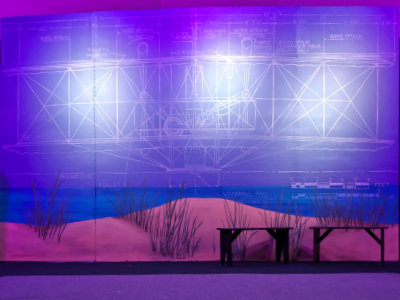
I’m always intrigued by how a single stage of limited size gets used to tell stories involving multiple locations that are sometimes huge spaces. That is another challenge that this production encounters and handles quite well despite not having a Broadway-sized budget. By flipping panels, hanging pictures, and swapping some furniture, the action moves between sand dunes, living rooms, workshops, France, England, and more. In a program note, director Lara Gonzalez talks of collaborating and creating “throughout the rehearsal process”. Much of the collaboration naturally involved Gonzalez and Davis but I’d be surprised if there wasn’t at least one idea contributed by every cast and crew member.
I’ll give a shout out to the actors portraying the Wright siblings although every member of the cast of nearly twenty turned in wonderful performances. Corey Meyer (Wilbur) has the least experience of the three younger Wrights although I certainly would not have known that without a program. Nico Morello (Orville) and Eva Bower (Katharine) have both been on stage quite a bit. I had sort of mentally tagged Eva as the most polished of the cast and learned that I could be right when I read that she was first on stage at age 9.
I have no idea what, if anything, comes next for Above the Sand. I know of no plans for future performances but I sure hope that there will be some. I was entertained Thursday night, and exposed to a little science and history too. I don’t believe any of the science or history facts were really new to me but some of the emotion was. I’ve read numerous articles and books about the Wright brothers and their early flights. I’ve watched more than a few documentaries too. None of them conveyed the sense of awe from the world at large that I witnessed Thursday night. Maybe it came from the music. Or maybe it came from the personal involvement that a live performance requires. At some level, I know I have considered that the existence of powered flight changed the basic way that an awful lot of people looked at the world but it had never registered as strongly with me as it did in that theater. Before December 1903, many people had considered it impossible; others thought it merely quite difficult. The first group was now indisputably proven wrong. The second group was proven right and no longer had to guess at just how difficult it was. It took some time for the news to circle the globe and even more time for some people to accept it but that did not alter the fact. Somehow a group of people singing about something they were witnessing offstage drove that home better than any words on a page or images on a screen. Hooray for music. Hooray for live theater. Hooray for man’s ability to progress and to be amazed at his own progress.


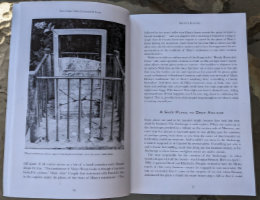 The stories are divided into six sections: “Ghostly Legends”, “Legendary Characters”, “Legendary Villians”, “Legendary Places”, “The Unexplained”, and “Legendary Events”. Having lived my entire life in southern Ohio, I was already at least somewhat familiar with most of them. There are exceptions including all four “Ghostly Legends”. It is the only section where every story is new to me and it is the only section dealing more or less directly with possibly supernatural phenomena. I’m thinking those two facts might very well be related. I’m also thinking that this is the right place to mention that Willis is the founder and director of the paranormal research group The Ghosts of Ohio. I find it somehow reassuring that this is also the only section where that comes into play and even here there is no straying from the “verifiable facts” approach.
The stories are divided into six sections: “Ghostly Legends”, “Legendary Characters”, “Legendary Villians”, “Legendary Places”, “The Unexplained”, and “Legendary Events”. Having lived my entire life in southern Ohio, I was already at least somewhat familiar with most of them. There are exceptions including all four “Ghostly Legends”. It is the only section where every story is new to me and it is the only section dealing more or less directly with possibly supernatural phenomena. I’m thinking those two facts might very well be related. I’m also thinking that this is the right place to mention that Willis is the founder and director of the paranormal research group The Ghosts of Ohio. I find it somehow reassuring that this is also the only section where that comes into play and even here there is no straying from the “verifiable facts” approach. I don’t believe I learned anything new about any of the “Legendary Characters” but I appreciate the concise and complete descriptions. Willis’ reporting on John Symmes and his hollow earth theory is among the most even-handed and comprehensive I’ve read. Likewise, his tale of “Legendary Villian” George Remus where I did learn a few details for the first time.
I don’t believe I learned anything new about any of the “Legendary Characters” but I appreciate the concise and complete descriptions. Willis’ reporting on John Symmes and his hollow earth theory is among the most even-handed and comprehensive I’ve read. Likewise, his tale of “Legendary Villian” George Remus where I did learn a few details for the first time.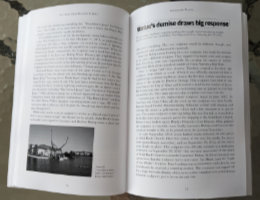 “Legendary Places” combines a place I had never heard of (Athens Pentagram) with three that I am quite familiar with. That somehow makes it my favorite section. One of the three familiar places, the Loveland Castle, was the subject of a blog post here
“Legendary Places” combines a place I had never heard of (Athens Pentagram) with three that I am quite familiar with. That somehow makes it my favorite section. One of the three familiar places, the Loveland Castle, was the subject of a blog post here 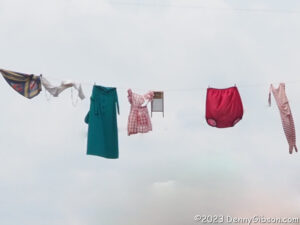
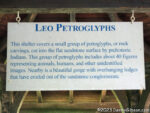
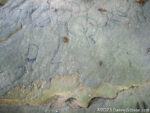
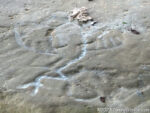
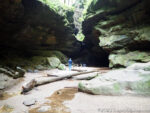
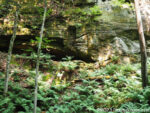
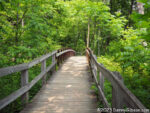
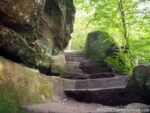


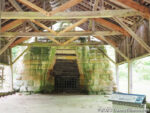
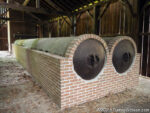

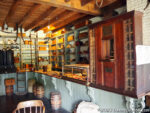


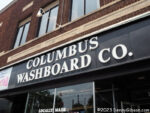
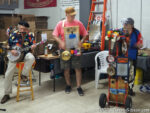
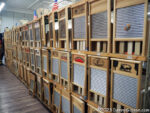
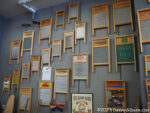
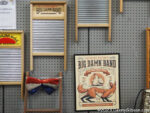
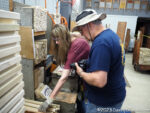

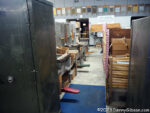
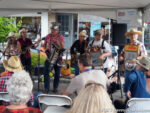
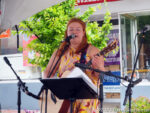
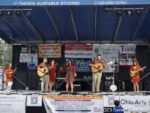
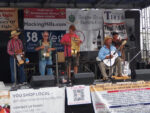
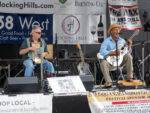
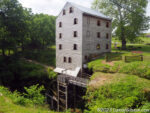
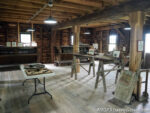
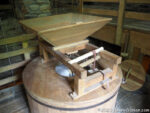
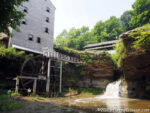

 For the second consecutive year, I’ve created a post specifically for my birthday. I didn’t expect to. I did it last year to note a milestone in age and a change in appearance. I’m doing it this year primarily to record some thoughts. I ended
For the second consecutive year, I’ve created a post specifically for my birthday. I didn’t expect to. I did it last year to note a milestone in age and a change in appearance. I’m doing it this year primarily to record some thoughts. I ended 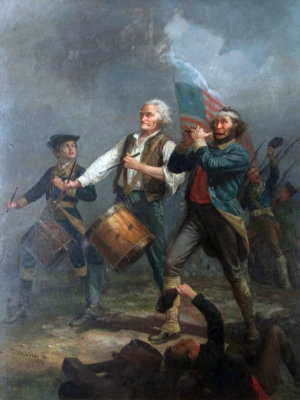 The day before John turned seventy-six, he commented about having that number of trombonists serenade him for his birthday. On the day. I shared a Youtube clip of The Music Man‘s signature song.
The day before John turned seventy-six, he commented about having that number of trombonists serenade him for his birthday. On the day. I shared a Youtube clip of The Music Man‘s signature song.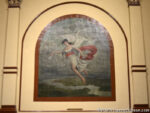
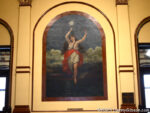
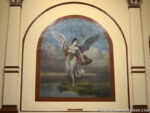
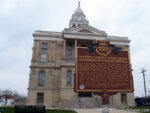
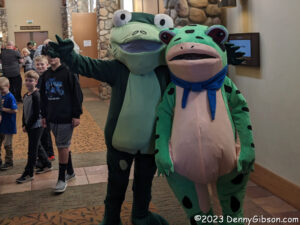

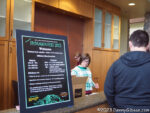
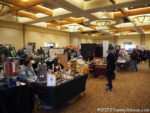

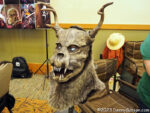
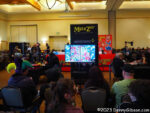


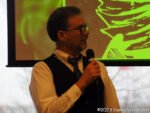
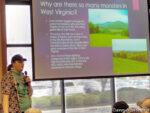
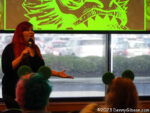
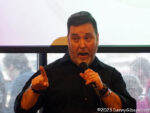
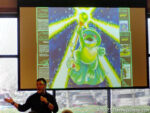
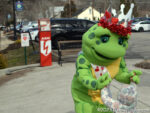
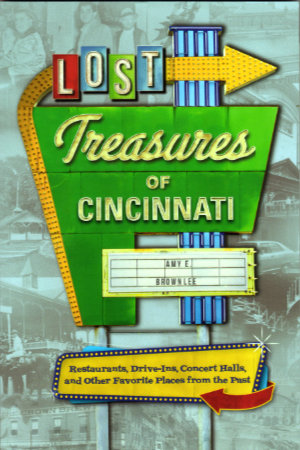 Amy E. Brownlee is a lifelong Cincinnatian. She naturally learned a lot about the city growing up here then used that knowledge and added much more during her ten years at Cincinnati Magazine. An awful lot of the treasures she writes about in Lost Treasures of Cincinnati were lost before she arrived but a rather frightening number have disappeared during her lifetime. Of course, an even larger number have disappeared during mine. Neither of us is responsible for that. I swear it’s coincidence pure and simple.
Amy E. Brownlee is a lifelong Cincinnatian. She naturally learned a lot about the city growing up here then used that knowledge and added much more during her ten years at Cincinnati Magazine. An awful lot of the treasures she writes about in Lost Treasures of Cincinnati were lost before she arrived but a rather frightening number have disappeared during her lifetime. Of course, an even larger number have disappeared during mine. Neither of us is responsible for that. I swear it’s coincidence pure and simple.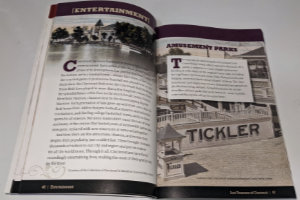 The book opens with “Food and Drink” in Section 1 then covers “Entertainment” and “Retail” in the next two sections. The smallest section, “Media”, is followed by the largest, “Community”. Definitions for those section titles are not particularly rigid and the size of the “Community” section probably indicates that it is the least rigid of all. It is where things like churches and breweries, of which Cincinnati had more than a few, appear.
The book opens with “Food and Drink” in Section 1 then covers “Entertainment” and “Retail” in the next two sections. The smallest section, “Media”, is followed by the largest, “Community”. Definitions for those section titles are not particularly rigid and the size of the “Community” section probably indicates that it is the least rigid of all. It is where things like churches and breweries, of which Cincinnati had more than a few, appear.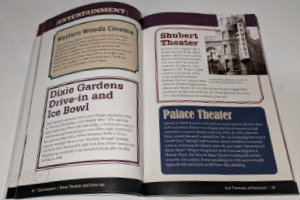 Most, but not quite all, of the breweries mentioned in the book were gone before I got here. Likewise with restaurants and attractions which together comprise the biggest part of things that have disappeared during my lifetime. I caught one show, Hair, at the Shubert (“Entertainment”) before it was torn down. I also saw one movie at the Albee (“Entertainment”) but I don’t remember what it was. I had one meal each at The Gourmet Room and the Maisonette (“Food and Drink”) before they closed. There are quite a few places in this book where I ate one or more meals or watched one or more movies, plays, games, or concerts. Encountering each of them on these pages prompted memories that went way beyond the single paragraph of text. Reading about places that were already gone when I came to Cincinnati didn’t prompt any memories, of course, but it did make me appreciate just how many treasures have been lost.
Most, but not quite all, of the breweries mentioned in the book were gone before I got here. Likewise with restaurants and attractions which together comprise the biggest part of things that have disappeared during my lifetime. I caught one show, Hair, at the Shubert (“Entertainment”) before it was torn down. I also saw one movie at the Albee (“Entertainment”) but I don’t remember what it was. I had one meal each at The Gourmet Room and the Maisonette (“Food and Drink”) before they closed. There are quite a few places in this book where I ate one or more meals or watched one or more movies, plays, games, or concerts. Encountering each of them on these pages prompted memories that went way beyond the single paragraph of text. Reading about places that were already gone when I came to Cincinnati didn’t prompt any memories, of course, but it did make me appreciate just how many treasures have been lost.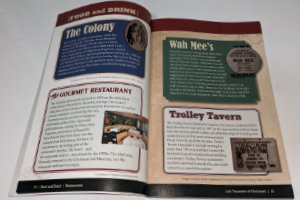 I really enjoyed reading Lost Treasures of Cincinnati cover-to-cover front-to-back but as I did, two other ways of reading the book came to mind. With its fairly short standalone essays, it seems like a natural fit for that popular personal reading room with the porcelain furniture. Its use as a reference book also seems rather natural. I don’t mean an every-last-detail reference book to use in conducting deep-dive research but a great place to answer questions like “What was the name of that boat-shaped restaurant?” or “What happened to our NBA team?”. The full index will help the book play that role.
I really enjoyed reading Lost Treasures of Cincinnati cover-to-cover front-to-back but as I did, two other ways of reading the book came to mind. With its fairly short standalone essays, it seems like a natural fit for that popular personal reading room with the porcelain furniture. Its use as a reference book also seems rather natural. I don’t mean an every-last-detail reference book to use in conducting deep-dive research but a great place to answer questions like “What was the name of that boat-shaped restaurant?” or “What happened to our NBA team?”. The full index will help the book play that role.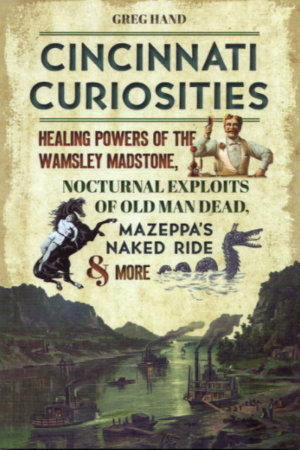 Greg Hand has been a man of letters — or at least a man of words — his entire adult life. He began as a newspaper reporter, moved up to editor, left to head up a university PR department, co-authored three books about the university while he was there, then retired. I was not even slightly aware of any of this as it was happening. I only became aware of Hand’s existence when I stumbled upon the blog he started post-retirement. His knowledge of local history and ability to dig up information to augment that knowledge was immediately apparent and I’ve been an ardent reader of that blog ever since that happy discovery. The blog’s name is Cincinnati Curiosities and it can be found
Greg Hand has been a man of letters — or at least a man of words — his entire adult life. He began as a newspaper reporter, moved up to editor, left to head up a university PR department, co-authored three books about the university while he was there, then retired. I was not even slightly aware of any of this as it was happening. I only became aware of Hand’s existence when I stumbled upon the blog he started post-retirement. His knowledge of local history and ability to dig up information to augment that knowledge was immediately apparent and I’ve been an ardent reader of that blog ever since that happy discovery. The blog’s name is Cincinnati Curiosities and it can be found 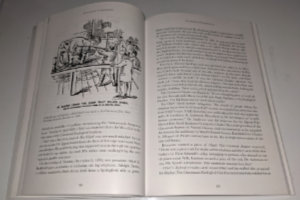 In fact, later in the book, Hand offers another very different capsulated view of the city. On December 12, 1890, he tells us, “The Palace Hotel had elephant steak on the menu because an elephant was executed by firing squad that morning at the Cincinnati Zoo. Hundreds of people watched. That pretty much summarizes Cincinnati in 1890.”
In fact, later in the book, Hand offers another very different capsulated view of the city. On December 12, 1890, he tells us, “The Palace Hotel had elephant steak on the menu because an elephant was executed by firing squad that morning at the Cincinnati Zoo. Hundreds of people watched. That pretty much summarizes Cincinnati in 1890.”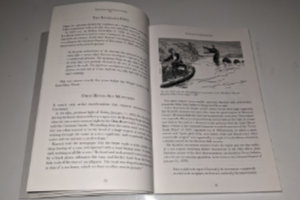 “The Sensational and the Senseless” is the fourth of ten chapters. Other chapters tell of monsters in the Ohio River (“The Old Weird Cincinnati”), Fanny Trollope’s visit during the “Porkoplis” period (“Tales From the Old City”), the possibility that striptease was invented in Cincinnati (“Freaks, Flesh, and Footlights”), and a large variety of other topics. The striptease claim is based on Millie De Leon’s orchestrated removal of several garters in 1901, and Hand cites the claim in suggesting that a Striptease Hall of Fame might be an “appropriate addition to our Over-the-Rhine neighborhood”.
“The Sensational and the Senseless” is the fourth of ten chapters. Other chapters tell of monsters in the Ohio River (“The Old Weird Cincinnati”), Fanny Trollope’s visit during the “Porkoplis” period (“Tales From the Old City”), the possibility that striptease was invented in Cincinnati (“Freaks, Flesh, and Footlights”), and a large variety of other topics. The striptease claim is based on Millie De Leon’s orchestrated removal of several garters in 1901, and Hand cites the claim in suggesting that a Striptease Hall of Fame might be an “appropriate addition to our Over-the-Rhine neighborhood”. 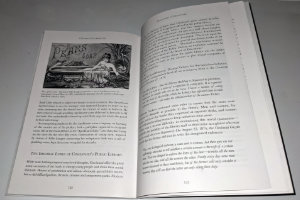 Hand’s usually light-hearted reports are often accompanied by contemporary illustrations. At left is a Pears Soap advertisement based on Lillie Langtry’s famous bath in Apollinaris water at Cincinnati’s Grand Hotel in 1883. It’s in the chapter titled “Nudity, Naughtness, and Negotiable Affection”, and if that doesn’t get you interested in the book I don’t know what will.
Hand’s usually light-hearted reports are often accompanied by contemporary illustrations. At left is a Pears Soap advertisement based on Lillie Langtry’s famous bath in Apollinaris water at Cincinnati’s Grand Hotel in 1883. It’s in the chapter titled “Nudity, Naughtness, and Negotiable Affection”, and if that doesn’t get you interested in the book I don’t know what will.

